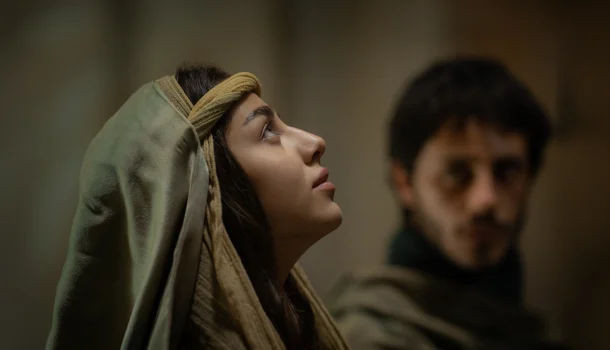For centuries, the figure of Christ has been shaped and reshaped through countless lenses — from theological fervor to artistic reinventions that attempt to decipher, yet never fully grasp, the enigma of his path. But while the spotlight has consistently illuminated the messiah, his mother — woman, daughter, devotee of faith, and a soul besieged by doubt — has seldom received equal narrative attention. By placing “Mary” at the center, D.J. Caruso proposes a subtle redirection, abandoning the untouchable pantheon in favor of an intimate fabric woven with devotion in its rawest human form. This Mary is no statue carved from perfection, but a living being in continuous evolution, who falters, questions, and yet endures.
The attempt to excavate humanity beneath the legend, however, reveals an inevitable contradiction: the closer the narrative moves toward the human realm, the greater the risk of colliding with the foundations of religious tradition. This is because Christian iconography tends to crystallize its characters within a framework of immaculate morality, suspended in time and impervious to error. Caruso, by contrast, suggests that before becoming a symbol, Mary was a young woman subjected to social pressures, ethical dilemmas, and a political reality devoid of mercy. In doing so, the film subtly implies that the most resilient faith may well be born of the most wrenching doubt.
The backdrop is far from neutral. Judea in the first century BCE, under the scrutiny of the Roman Empire, simmered with tension — caught between latent revolts, oppressive hierarchies, and a paranoid monarch. Herod, played by Anthony Hopkins, embodies not only the traditional villain of the biblical narrative but also an archetype of power devoured by its own fear — a man who knows that any birth outside his control represents not just a political threat, but an existential one. Despite Hopkins’s dramatic weight, his presence often feels ornamental, disconnected from the spine of the story, as though the production were unsure how to handle such an overwhelming force on screen.
The true gravitational core of the film, however, rests with Noa Cohen, whose portrayal of Mary eludes stereotypical fragility and conveys a silent, persistent spirituality. From a childhood marked by visions and family expectations inflated by divine promises, her path is depicted as a gradual climb toward acceptance — not as submission, but as a hard-earned decision. Joseph, played by Ido Tako, functions less as a protagonist and more as a compassionate mirror to Mary’s resolve. His love, though shaped by faith, is also a civil act of bravery: accepting the unexplainable without demanding proof.
The external conflicts — social condemnation, neighborhood judgment, the looming threat of persecution — serve less as tangible obstacles and more as amplifiers of the couple’s internal tension. The support of Mary’s parents, though secondary onscreen, symbolizes a shield against the symbolic slaughter that marginalization inflicts on women who dare to carry the extraordinary within them. More than confronting Herod, the couple must find a way to sustain their faith in a world that demands instant explanations and unshakable certainties.
The film’s ambition to humanize sanctified figures is, in itself, a worthy endeavor. Yet its narrative hesitation — swinging between scriptural fidelity and unanchored poetic license — undermines its strength. It lacks cohesion between the impulse to transgress and the reverence for doctrine. Rather than harmonizing these forces, the script stumbles in its own indecision, creating a hybrid that neither challenges nor resonates with full force.
Still, there are flickers of greatness in what the film dares to suggest, even if it doesn’t pursue them boldly. The notion that religious figures were not immune to fear, misunderstanding, and isolation is a rich starting point, capable of provoking intense philosophical and social implications. Unfortunately, this thread is not developed with the vigor it demands, drowned out by bland visual choices and a narrative rhythm that rehashes formulas already exhausted in other biblical dramatizations.
In the end, “Mary” hesitates before its own invitation to reflect. What might have been a bold reinterpretation becomes a timid portrait, lost somewhere between the altar and the dust of reality. The attempt to reimagine Mary as a multifaceted figure is far from irrelevant, but its execution reveals a creative unease in breaking free from the bounds of convention. What remains is a narrative that touches essential themes, yet lacks the breath to transform them into something enduring.
Film: Mary
Director: D.J. Caruso
Year: 2025
Genres: Drama
Rating: 7/10

